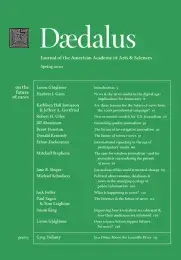The future of investigative journalism
When I was working at the Hartford Courant in Connecticut in the early 1990s, an editor came up with the theory of constant mass in a newsroom. He said that if you watched closely you would see that when one journalist went on a diet another one gained weight. But no matter the losses and gains, he said, the general mass of the newsroom stayed the same.
A similar theory might be applied to investigative journalism in the twenty-first century. While investigative reporting has drastically diminished in traditional and mainstream newsrooms, it has rapidly expanded into different forms and combinations in Web ventures and at universities throughout the world.
There is little dispute about whether there should be a future for investigative reporting. The issues are how will it be defined, how will it maintain high standards and quality, in what forms and with what methods will it thrive, and how will it be financed.
The definition of investigative journalism is multifaceted. It is original reporting full of rigorous documentation and numerous interviews. It is fiscally conservative, probing waste, fraud, and abuse in government agencies. It is adversarial and populist, challenging the powers that be. It brings with it moral judgments.
In From Yahweh to Yahoo! author Douglas Underwood tracks the origins of investigative reporting back to sixteenth-century England and its religious reformers, who traced their zeal to the New Testament. “Many elements of the prophetic tradition–the spirit of righteousness, the indignant moralism, the effort to maintain the purity of values, the call for spiritual and ethical renewal, the fierce sense of corruption abounding everywhere–are as typically found in today’s best investigative reporters or crusading editors.”1 In fact, in 1975, The Christian Church, Disciples of Christ, was closely involved in the formation of IRE (Investigative Reporters and Editors) and the choice of its apt acronym.2 The work thus brings with it heavy ethical burdens that underlie the standards–fairness, accuracy, thoroughness, and transparency–for the investigative journalism of the future.
Because of its adversarial qualities, investigative journalism is always under threat or attack–physically, legally, or financially. Now, with enormous losses in advertising revenue and ensuing lay-offs at news organizations, the worries about the future are constant. “Hardly a week goes by without someone lamenting the death of investigative reporting,” wrote veteran reporters Donald Barlett and James Steele in Nieman Reports. “It’s a familiar litany: The media are cutting back; crucial stories aren’t being covered; democracy will suffer.” (They added that the support given to investigative reporting by publishers in the twentieth century had often resembled the enthusiasm of drunken sailors at a prayer meeting.)1
. . .
